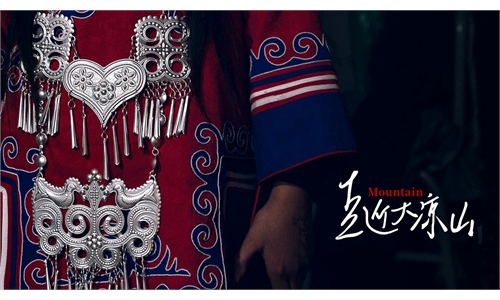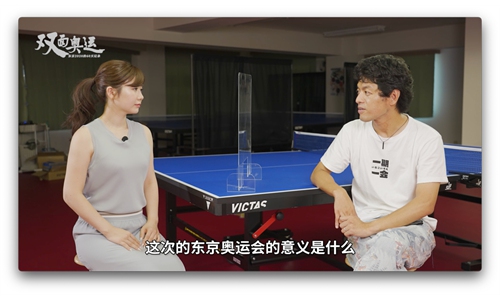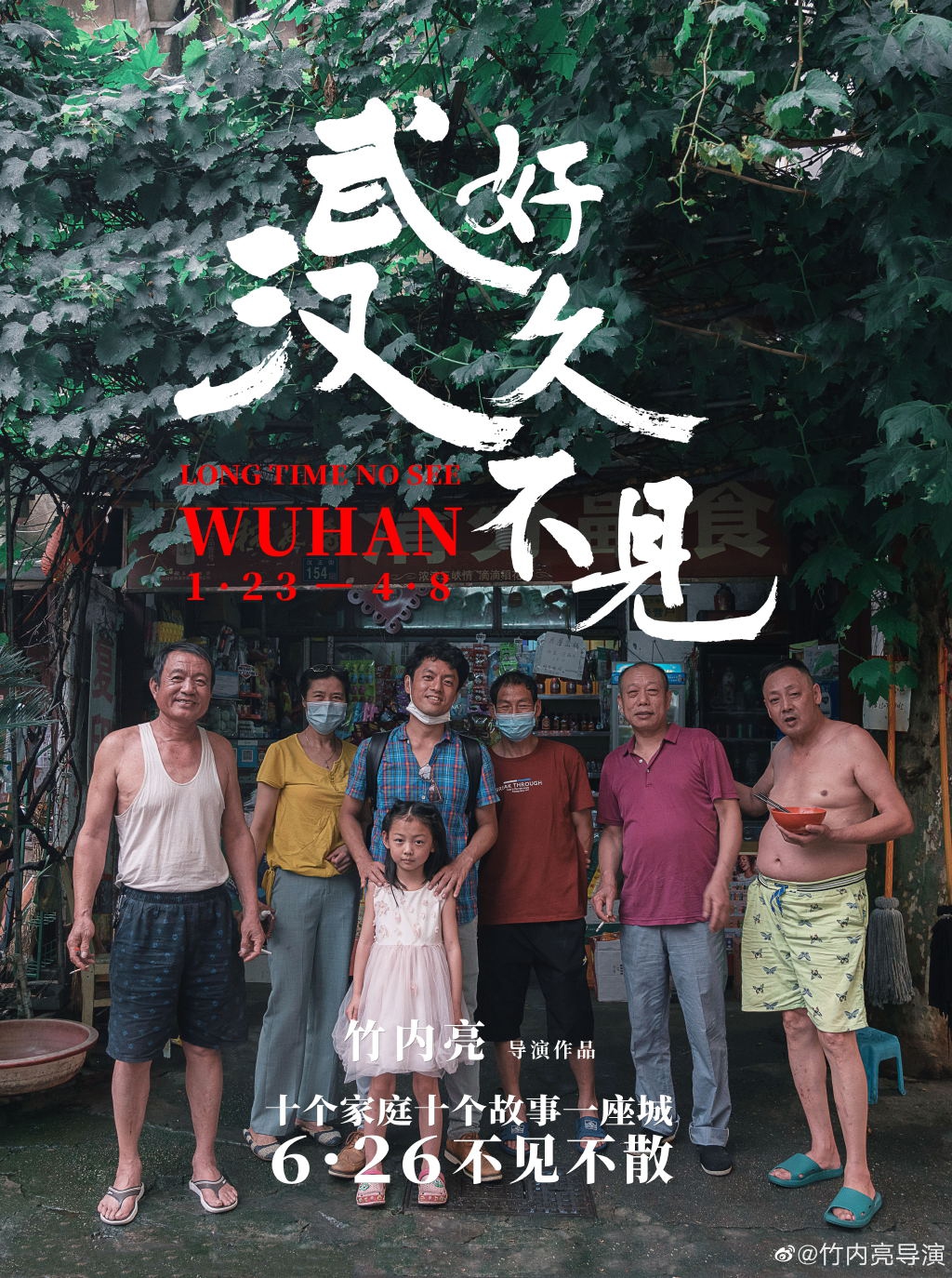
A poster of Long Time No See, Wuhan
In the summer of 2020, Ryo Takeuchi, a Japanese documentary director, went popular on the internet in both China and Japan. Chinese netizens call him "Uncle Ryo." Born in Chiba Prefecture of Japan in 1978, Takeuchi now lives in Nanjing of China. If you go to Douban, a movie review platform popular among young Chinese, you may find 11 of Takeuchi's works, most of which are related to China and have high ratings. But it is Long Time No See, Wuhan, a 61-minute documentary that has brought Takeuchi under the spotlight.
On June 1, 2020, after Wuhan lifted its lockdown caused by COVID-19, Takeuchi arrived in the city together with a scenarist and two cameramen. They spent 10 days there filming the documentary, which tells the stories of 10 Wuhan residents — their life during and after the pandemic outbreak.
Lai Yun, the owner of a Japanese restaurant, bought most of the ingredients from Huanan Seafood Wholesale Market before the outbreak. He led Takeuchi's team to visit the Huanan wet market after the outbreak and the business district where his restaurant is located. "Dbear," a middle school English teacher who loves to share Wuhan's culture, filmed the city's scenery with a drone. "Old Ji," a takeout deliveryman, recorded what he saw during the outbreak with his camera. Gong Shengnan, a nurse, learned how to ride bicycle after the outbreak and cycled through the Yangtze River Bridge with her best friend. Li Jie, one of the construction personnel for the Leishenshan Hospital, gave Takeuchi a tour around the legendary hospital which he worked so hard to build. After being separated for more than 100 days due to COVID-19, a young couple resumed their wedding plan and went to choose the wedding dress. The virus will eventually go away. The Sun rises as usual and life will go on. A group of elders wearing red scarfs (a symbol of Young Pioneers of China) were preparing to swim across the river. They were joyful for finally being able to swim after more than four months of lockdown.
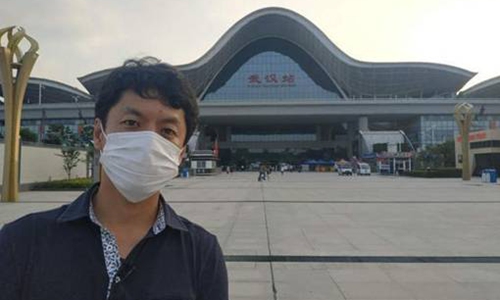
Ryo Takeuchi in Wuhan
In this documentary, the audience not only saw a Wuhan returning to normalcy, but also felt the resilience and optimism of ordinary people. It is through simple and close-to-life storytelling that Takeuchi's film presented the beauty of real life and people's kindness. As the director, Takeuchi personally wrote a review for the film — "We were afraid of letting Wuhan down." He wrote that he once wanted to become a filmmaker but also considered becoming a journalist. He chose documentary shooting because it somehow combines film-making and journalism. "True stories are what touch me the most," Takeuchi said. He knows that being truthful is fundamental to documentaries, as it is to journalism. His work tells true stories with no bias, and demonstrates sympathy with the ordinary people. That's why it is successful both in and outside China.
In an interview, Takeuchi said, "Our principle is no double standards — disparaging China when the film is played in Japan or flattering China when it's played in China. That is what I am against. Every film we make has only one version, and shall be played in both countries without the slightest alteration of narration or frame. That is our principle."
Takeuchi's pandemic-related documentaries also include Nanjing's Anti-Epidemic Scene and The Post-Pandemic Era. They allowed more people to know how China fought against COVID-19 through a truthful record of China's tremendous, successful efforts for pandemic control and economic recovery. "The fact that China is able to achieve both pandemic control and economic recovery now is a reward for the joint efforts of 1.4 billion people," said Takeuchi in The Post-Pandemic Era. The joint efforts of the Chinese people deserve truthful records, and the world also needs people like Ryo Takeuchi to tell the truth and convey genuine thoughts.
In fact, China has not only curbed COVID at home, but also contributed a great deal to the global battle against the virus. Despite all this, those with bias still turn a blind eye to facts. Unlike some countries that practiced "vaccine nationalism," China has been extending vaccine assistance to more than 80 developing countries in urgent need and has exported vaccines to 43 countries. China also provided $2 billion in assistance for developing countries hit by COVID-19 and medical supplies for more than 150 countries and 13 international organizations. In total, China has supplied to the world more than 280 billion masks, more than 3.4 billion protective gowns, and 4 billion testing kits. These were important support at most trying times. In addition, China has dispatched 36 medical teams to 34 countries, who traveled long distances to help the local communities fight against the COVID-19. Most of these medical workers are CPC members, and many of them had just returned home after fighting the virus in Wuhan. But answering to the call of the Party, they raced to new battlefields without any hesitation.
The last scene of Long Time No See, Wuhan was filmed by the Yangtze River which runs through the heroic city of Wuhan as well as the city of Nanjing, where Takeuchi has lived for years. In fact, Takeuchi's story about the Yangtze River started much earlier. Back in 2011, he participated in the filming of a documentary about the river. The work was produced by NHK, Japan's largest national broadcaster.
During the production of that documentary, Takeuchi went to Daliang Mountains, a poverty-stricken area in the Southwest China's Sichuan Province. Back then, there was no highway in Daliang Mountains and Takeuchi had to ride a donkey to go inside. But when he returned 10 years later to film his documentary Beyond the Mountain, people's life in the same mountains has been transformed. Thanks to China's determined efforts to reduce poverty, the "cliff villages" have been relocated to more habitable places and the highway network now reaches every local village. Even a local water seller, in her 70s, knows how to use mobile payment.
Daliang Mountains is just one epitome of China's development. Takeuchi is planning to film another documentary about the Yangtze River this year. He wants to start from the source of Yangtze and go all the way down to Shanghai, where the river meets the sea. "I want to travel along the 6,300-kilometer-long Yangtze River again to capture the various local cultures. I will start with the Qinghai Tibet Plateau, and go downstream to record the life of local people in Qinghai, Yunnan, Sichuan, Chongqing, Hunan, Hubei, Jiangxi, Anhui, Jiangsu and Shanghai, so the audience can see the changes that have taken place in China in the past 10 years through one river," Takeuchi said.
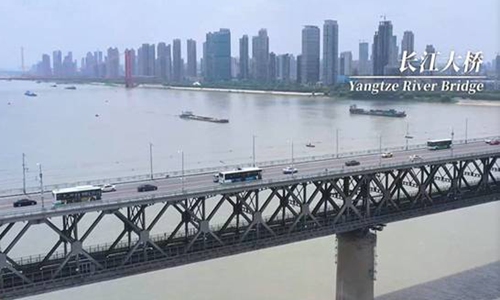
A screenshot of the Wuhan Yangtze River Bridge in Ryo Takeuchi's documentary
The Yangtze River and its tributaries, connecting inner lands with the sea, have served as a bond between people from different areas in China. For millennia, it has nurtured the local cultures along its route, from the Southwest China's Sichuan and Chongqing city to water towns in the Yangtze River Delta. Takeuchi's new plan is to shift his focus from COVID-19 to the Yangtze River and display China's latest changes in the new era. In 2016, at a symposium on advancing the development of the Yangtze River Economic Belt, Chinese President Xi Jinping put forward the direction of "strong environmental protection and no excessive growth." A blueprint was drawn for the Yangtze River Economic Belt to pursue green development and ecological conservation. Five years later, the Yangtze River Economic Belt has taken on a new look. People residing along the river enjoy a life of harmony with nature.
Takeuchi said, "I spoke little Chinese 10 years ago and was not as familiar with China as I am now. Having gained more knowledge about this country, I have confidence in producing an even better documentary this time." Undoubtedly, with a truthful and unbiased perspective, Takeuchi will be able to capture the new charms of the Yangtze River with his camera. If one does not apply any filter, beauty or gloomy, if one focus on the real China, they will find its true beauty and their record will stand the scrutiny of history.
